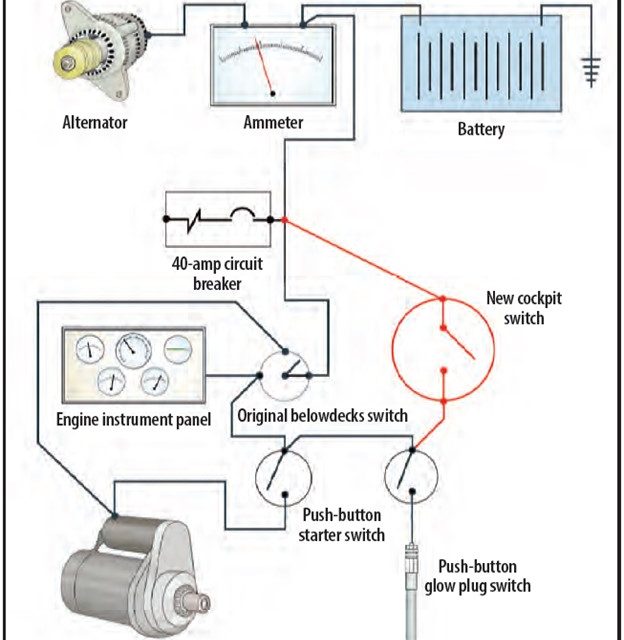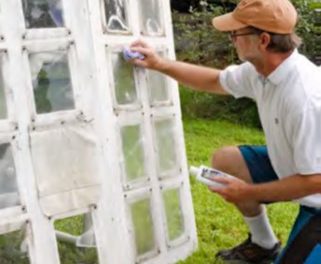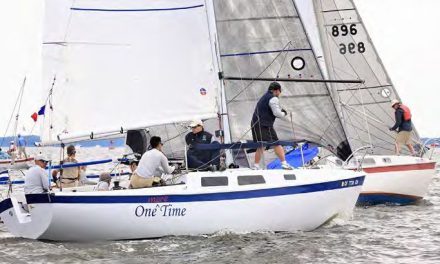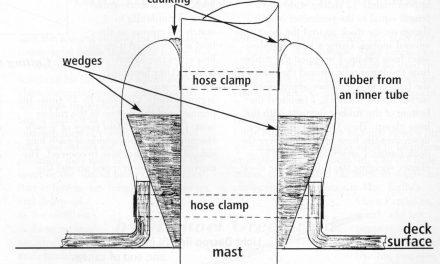Adding a second engine switch in the cockpit made singlehanding safer and easier.
Issue 141: Nov/Dec 2021
Reading Robb Lovell’s review of the Beneteau First 345 (September/ October 2019), I realized for the first time that Nurdle, my 1979 Bristol 35.5, is not the only racer/cruiser cursed with an engine ignition switch located below decks. This key-operated switch, just inside the companionway near the electrical panel, must be in the on position for the momentary switches at the helm—one for energizing the glow plugs, one for starting—to operate.
 This presented a challenge when I wanted to singlehand, since I’d have to leave the helm momentarily to turn the key. (I can’t leave the key on all the time because it drains the battery.) This wasn’t just an inconvenience, but a safety risk.
This presented a challenge when I wanted to singlehand, since I’d have to leave the helm momentarily to turn the key. (I can’t leave the key on all the time because it drains the battery.) This wasn’t just an inconvenience, but a safety risk.

The new ignition switch is located in the cockpit well just below the shorepower outlet and close to the momentary switches for start and glow plug.
Adding a second key switch near the helm became a priority. A cover plate over a hole left for an unused shorepower inlet in the cockpit provided the perfect location.
For the switch itself, I happened to find a quality, marine-grade, brass switch at a local swap meet, but these are readily available new, such as the Cole Hersee model M-489 for around $25. I’d advise against buying less expensive, non-marine ignition switches, as they will corrode quickly. Also, in terms of parts, be sure to use wire terminals that are properly crimped—and, if possible, heat-shrunk—and are secured by a screw, rather than the push-on type.
Using 10 AWG wire and the feed side of a previously installed 40-amp breaker as a terminal post, I connected the battery side of the old key switch to the new key switch. In this way, both the old and new key switches are energized when the batteries are on. (It’s important to note that the 40-amp circuit breaker does not protect the engine-starting circuit.)
I installed a similarly sized wire from the new key switch to the momentary switch for preheat (glow plug), which was already connected to the momentary start switch.
In this way, the new key switch is always energized, and when I switch it to the on position, I can start the engine without having to leave the helm.
For finishing touches, I found a rubber boot at Sailor’s Exchange consignment shop in St Augustine to seal the keyhole against the elements. These are also available online. The start and preheat switches had black weatherproof boots. To make it easier to remember, I swapped out the preheat boot for a red one.
With a few hours labor and not much money, sailing Nurdle is now more convenient and a bit safer.
John Churchill grew up a boat-crazy kid in Indiana. He built a raft at age 6, sailed Snipes as a teenager, and worked his way toward saltwater and bigger boats. He has sailed a Cape Dory 26 singlehanded to Bermuda and back, and a Bristol Channel Cutter transatlantic with his father. Now in Florida, John sails Nurdle, a Bristol 35.5 (and former repo) that he’s rehabbing for extended post-retirement cruising.
Thank you to Sailrite Enterprises, Inc., for providing free access to back issues of Good Old Boat through intellectual property rights. Sailrite.com





